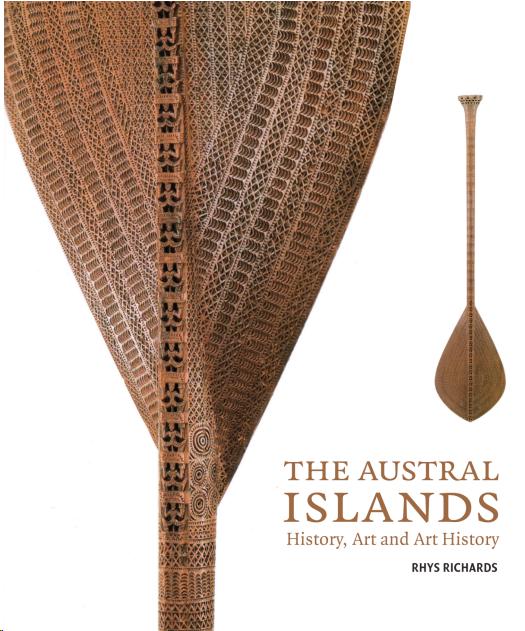Difference between revisions of "The Austral Islands: History, Art and Art History"
(→Blurb:) |
|||
| Line 8: | Line 8: | ||
== Blurb: == | == Blurb: == | ||
| + | '''The Austral Islands: History, Art and Art History''' is in three parts. Part I is a sequence of comments made by the earliest foreign visitors, mainly using their own words. These historical extracts are the raw material of anthropology, but without its methodology and vernacular. This should enable today's Islanders,and others, to get to know something of the pre-colonial heritage of the Austral Islands. | ||
| − | . | + | Part II provides a selection of thirty colour photographs of early Austral Island arts now in the British Museum, the Pitt Rivers and other museums and private collections. Along with over 100 black and white illustrations in the margins of Part I, these larger colour pictures should help convey the flair, creativity, beauty and impact of the artifacts that remain. |
| − | . | + | |
| + | Part III provides a few personal comments and art history essays about specific classes of artifacts, such as the famous exquisitely carved 'paddles' and the rare tapa cloth, and contexts within the wider Pacific. | ||
---- | ---- | ||
Revision as of 19:52, 15 June 2012
The Austral Islands: History, Art and Art History
Rhys Richards, designed by Anna Brown. Paremata Press. 236 pages, 145 illustrations (30 in colour.May be ordered from Paremata Press 73 Seaview Road Paremata, Wellington N.Z. or by Email : mrhys@paradise.net.nz
Blurb:
The Austral Islands: History, Art and Art History is in three parts. Part I is a sequence of comments made by the earliest foreign visitors, mainly using their own words. These historical extracts are the raw material of anthropology, but without its methodology and vernacular. This should enable today's Islanders,and others, to get to know something of the pre-colonial heritage of the Austral Islands.
Part II provides a selection of thirty colour photographs of early Austral Island arts now in the British Museum, the Pitt Rivers and other museums and private collections. Along with over 100 black and white illustrations in the margins of Part I, these larger colour pictures should help convey the flair, creativity, beauty and impact of the artifacts that remain.
Part III provides a few personal comments and art history essays about specific classes of artifacts, such as the famous exquisitely carved 'paddles' and the rare tapa cloth, and contexts within the wider Pacific.
Another book by Rhys Richards is here.
